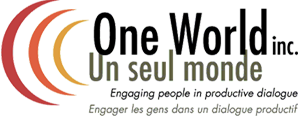Connecting Theory And Practice For Effective Public Engagement

The theory and practice of Public Engagement is always evolving, thanks in part to ongoing research initiatives from industry leaders around the globe. Staying on top of and incorporating the latest findings is an essential part of effective Public Engagement practice. One example is new thinking that brings a systems understanding to public engagement.
How The Public Engages: Ecologies Of Participation
For over a decade, lecturer and social scientist Jason Chilvers (School of Environmental Sciences, University of East Anglia) has studied public dialogue and deliberative public engagement in the areas of sustainability, energy, and emerging technologies. His work has brought new insight to the Public Engagement field.
Chilvers argues that there are a wide variety of ways in which people become engaged in public policy. These channels of engagement are referred to as “ecologies of participation”.
Gathered together, the varied ecologies of participation constitute the “universe of interests” on a particular issue. It is the task of the Public Engagement Practitioner to employ a “system approach” to be aware of the trends within this universe, and to find ways to connect the process(es) they are working on – with these other existing types of engagement, whenever possible. This is not the same as stakeholder mapping – instead this is understanding the different modalities through which people are engaging. Underestimating these, or not being aware of them, can undermine a process or limit its potential.
Forums For Public Participation: 4 Ecologies
In the “universe of interest” there are four ecologies of citizen engagement a Public Engagement Practitioner can mine. They are:
- Micro-public: A small group of representative participants invited to express the public’s perspective on a topic.
- Invited Macro-public: Larger events where the public is invited to contribute en masse. Macro public forums can include online dialogue, open forums such as “America Speaks,” or other deliberative dialogue settings.
- Do-It-Yourself Citizen Participation: Citizens work through issues themselves and create action plans. They often create non-deliberative conversations about issues that are informed by policies.
- Broader Uninvited Public: This approach has grown through the proliferation of social media. People engage and express their views in a spontaneous and uninvited way.Public Engagement Practitioners can learn from leading researchers to improve their methodologies and engage with citizens more thoroughly. The system approach encourages the leaders of organizations and Public Engagement Practitioners to tap in to the wisdom and energy of all four ecologies of participation.After learning from each of the available channels of public input, practitioners are able to confidently bring public perspectives and considered input to the policy makers’ table and/or the community. This is by no means an easy task, but public input from as many available sources as possible is an integral part of inspiring lasting social change.
